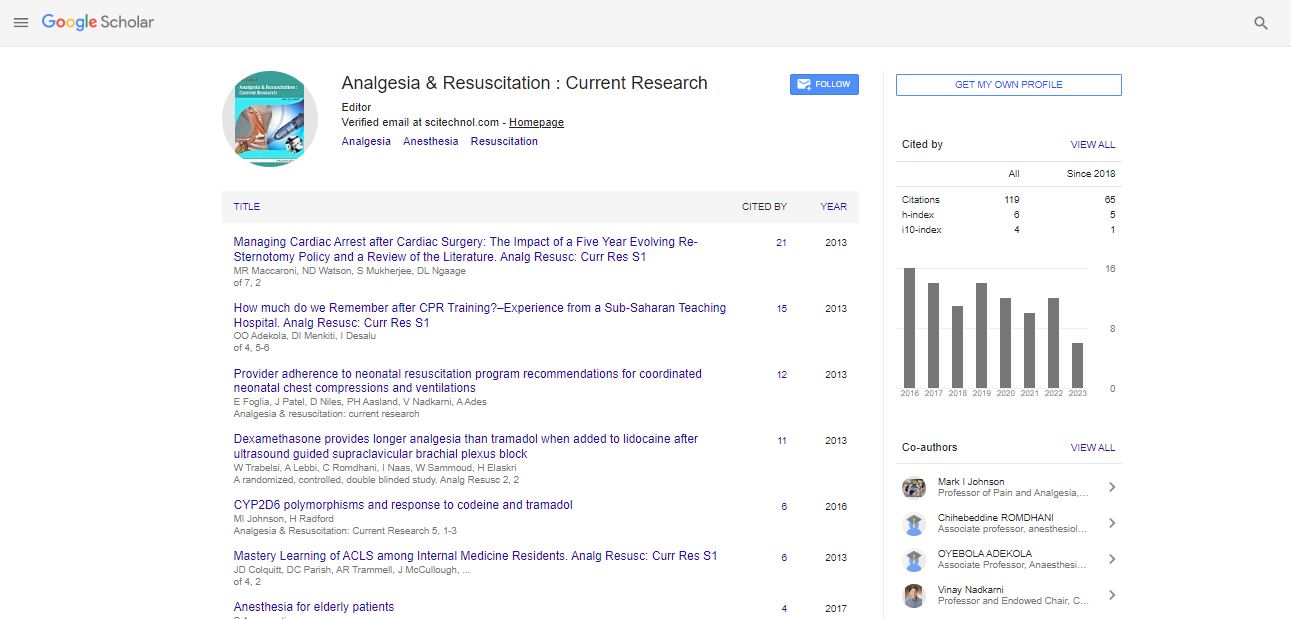Editorial, Analg Resusc Curr Res Vol: 1 Issue: 1
The Challenges of Determining the Effectiveness of Electrophysical Therapies
| Mark I. Johnson* |
| Leeds Metropolitan University, UK |
| Corresponding author : Mark I. Johnson Leeds Metropolitan University, UK E-mail: M.Johnson@leedsmet.ac.uk |
| Received: June 29, 2012 Accepted: July 02, 2012 Published: July 05, 2012 |
| Citation: Johnson MI (2012) The Challenges of Determining the Effectiveness of Electrophysical Therapies. Analg Resusc: Curr Res 1:1. doi:10.4172/2324-903X.1000e101 |
Abstract
The Challenges of Determining the Effectiveness of Electrophysical Therapies
Electrophysical therapies, such as acupuncture, electrical nerve stimulation, low level laser therapy (LLLT), mobilization, manipulation, massage and ultrasound are often used to relieve pain. Evidence about effectiveness is often inconclusive and clinical practice is dictated by clinical experience and local policy. Transcutaneous electrical nerve stimulation (TENS) provides a good example of the difficulty of trying to determine the clinical effectiveness of such technique based electrophysical therapies. A small hand held stimulator is used during TENS to generate pulsed electrical currents that are delivered across the intact surface of the skin via self- adhesive electrode pads. The purpose of conventional TENS is to activate low threshold peripheral afferents (the same nerve fibers as rubbing the skin) which inhibits second order central nociceptive cells, reducing nociceptive input to the brain.

